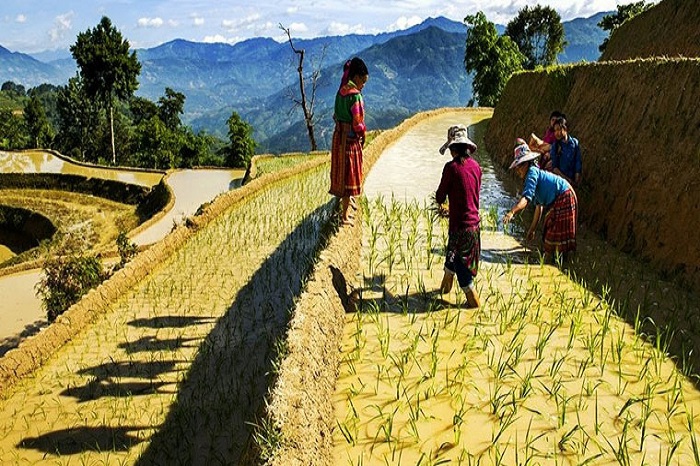
Hoang Su Phi rice terraces, the natural heritage of Ha Giang
- on Jan 11, 2020 By: Ngoc Nguyen
Covered by hundreds of hectares of rice terraces, the Hoang Su Phi region attracts many travellers every year who come to marvel at its sublime natural setting. This masterpiece highlights the brilliant work of generations of ethnic Dao, Nung and La Chi people living in the Northwest mountains. Listed as a national heritage, these terraced rice fields amply deserve their reputation for exceptional values, both natural and cultural.
How to get there?
From Ha Giang city, take national roads 2 and departmental 177 to reach the border district of Hoang Su Phi, after about 100 kilometres.
Where to admire the rice terraces of Hoang Su Phi?
With an average altitude of 900 meters, this region is characterized by a varied relief largely covered by mountains, known for two Tay Con Linh roofs (2,402 meters) and Kieu Lieu Ti (2.402 meters). A real theatre for the breathtaking shows played by the fields in the stands of Hoang Su Phi.
To appreciate the most resplendent fields, go to these 6 towns:
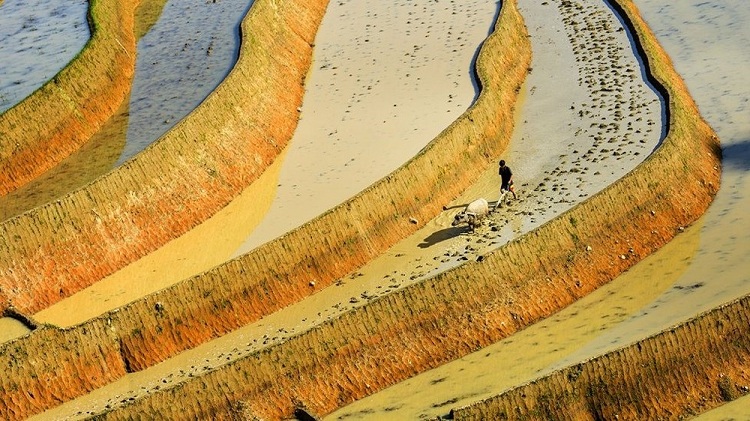
Each people has its own imprint
The period of returning to the fields to prepare a new planting season for ethnic minorities in Hoang Su Phi has a certain time lag. If the Dao starts to work the land at the end of the Tet or Lunar New Year, the La Chi will do it later, in the rainy season around April until September of the lunar calendar.
Each ethnic group is attached to their own cultural custom and their own relative beliefs. Sacred and varying from one tribe to another, the rites devoted to wishing good things for agricultural work play an important role in the lives of people in the mountains. However, they share ancestral rituals such as the rain invocation, the new rice festival which, punctuated by production cycles, are also part of their cultural heritage.
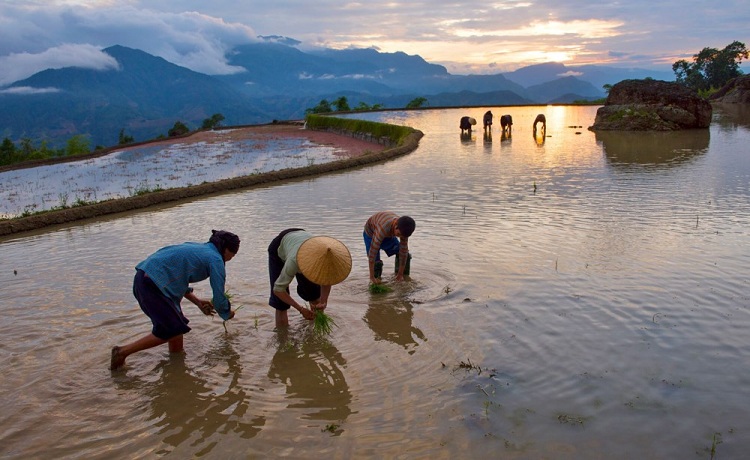
On the practical side, the rice terraces of Hoang Su Phi are also an eloquent witness of the imagination of man in the exploitation of the land at high altitude. The La Chi and Nung people tend to cultivate rice in the plots close to their home while the Red Dao opts for those rather far away. From a technical point of view, if other groups transplant by backing up, the Red Dao, on the contrary, advances on the field.
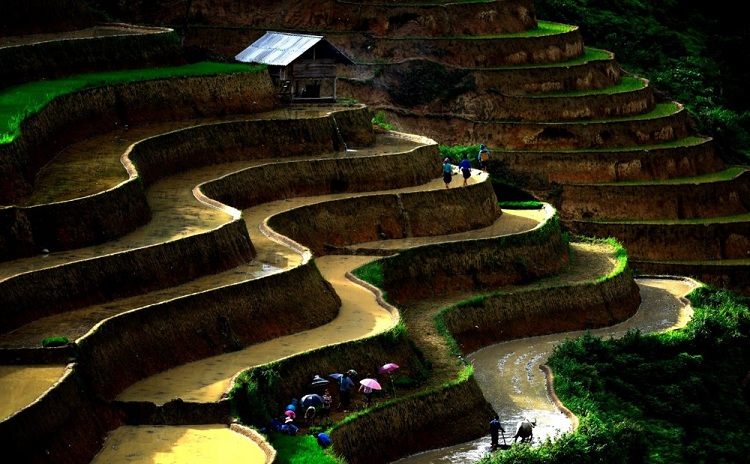
No one knows exactly since when the rice terraces of Hoang Su Phi have existed. One thing is certain is that this mode has gained ground to replace step by step slash-and-burn cultivation, a practice resulting from vulnerable nomadic life. Admiring the incredibly large painting engraved by ethnic peasant architects, one can say that the most beautiful rice fields of Ha Giang date back hundreds of years.
Head to the Phung village to immerse yourself in 133 hectares of rice entirely suspended in tiers. Rice accompanies you throughout 10 kilometres from the bridge over the Red stream to the centre of the town. You will sometimes come across a mountain of rice hundreds of meters high. It is very likely that the land of Phung village reveals the most magnificent of all the rice terraces in Vietnam.
Compared with the mountain wonders at Mu Cang Chai in Yen Bai and Y Ty in Lao Cai, the beauty of Hoang Su Phi rice terraces seems more striking due to the greater slope and height.
Related articles:
>> How to visit Ha Giang in 3 days?
 Español
Español Français
Français









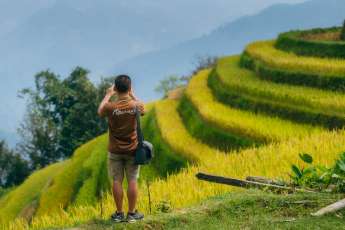
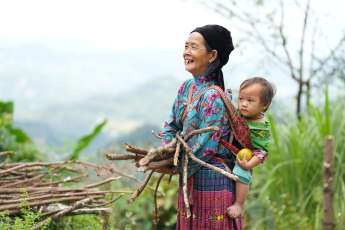
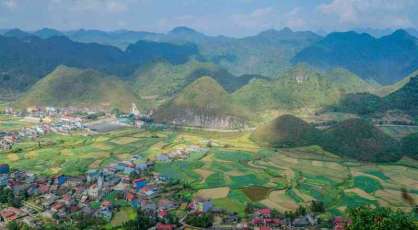
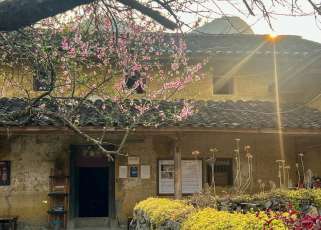







Morgane Ter Cock
on Dec 18, 2025HerbertPhomaMS
on Oct 19, 2025Lilyan Cuttler
on Oct 15, 2025Avenue17XC
on Sep 14, 2025Avenue18JL
on Jul 21, 2025